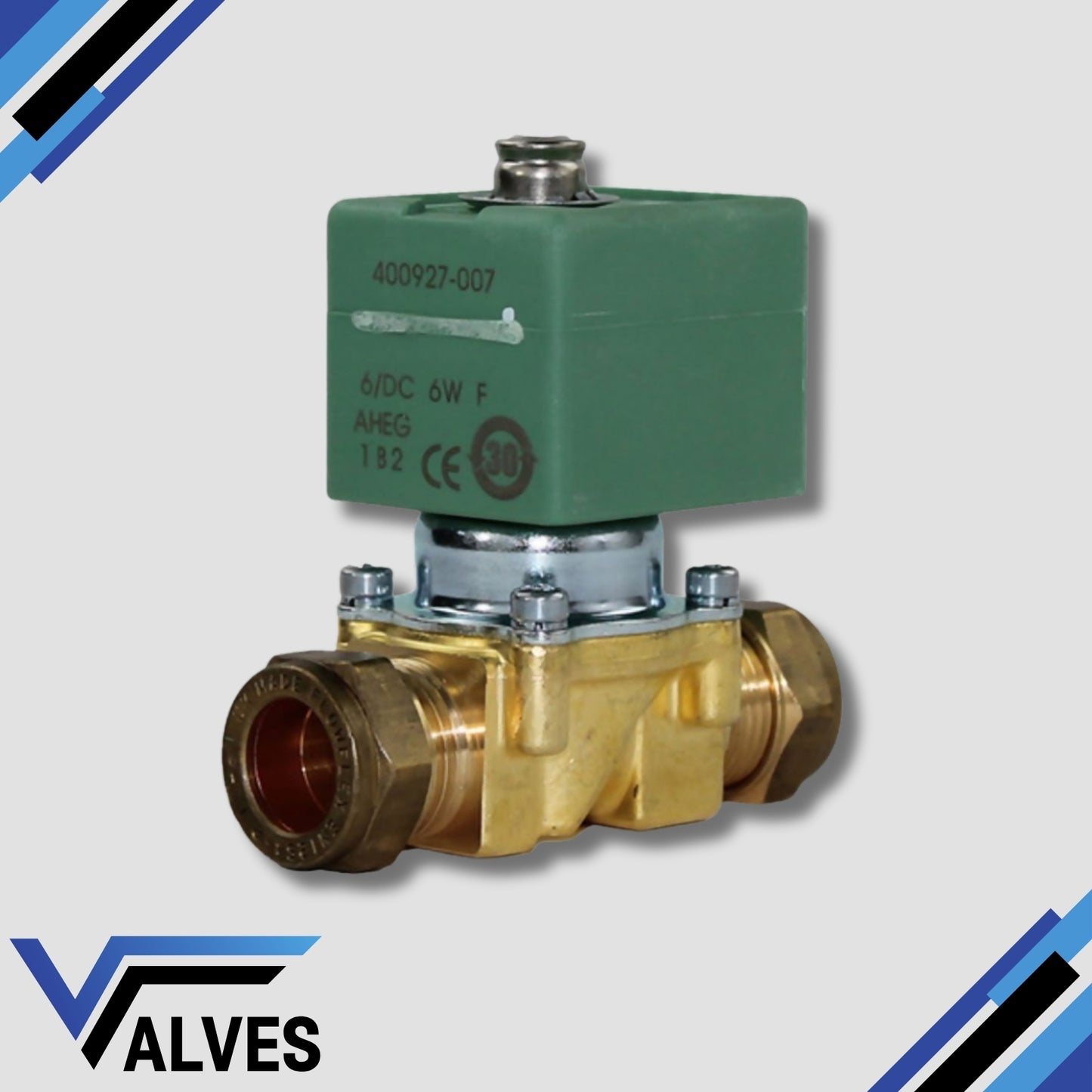Valves UK
ASCO Solenoid Valves SCXH210G202BW 2/2 NC15MM Wras Approved For Water
ASCO Solenoid Valves SCXH210G202BW 2/2 NC15MM Wras Approved For Water
Couldn't load pickup availability
IN STOCK - SAME DAY DISPATCH
The ASCO SCXH210G202BW is a high-quality 2/2 normally closed (NC) solenoid valve, specifically designed for water applications and certified for potable water use with WRAS approval. With a 15 mm (½") compression connection, it offers reliable shut-off performance in washroom, plumbing, and general fluid control systems.
Key Features
Type: 2-way, normally closed (NC)
Port size: 15 mm compression / ½″ equivalent
WRAS-approved EPDM seals for potable water use
Pilot-operated hung diaphragm design (low pressure capability)
Suitable for water, air, inert gases, light oils compatible with EPDM
Compliant with Pressure Equipment Directive (PED 97/23/EC) for group 1 & 2 fluids
Compact, reliable construction adapted for washroom / sanitary systems
Share

Enquire Online!
FAQ's
What is the difference between a valve and an actuator?
What types of actuators are available?
The main types of actuators are:
Pneumatic actuators – use compressed air for fast, reliable operation.
Electric actuators – use electrical power for precise control.
Hydraulic actuators – use fluid pressure for high-torque applications.
Each type offers unique advantages depending on the environment, media, and system control needs.
How do I choose the right actuator for my valve?
To select the correct actuator, consider:
Valve type and torque requirement
Power source available (air, electric, or hydraulic)
Operating environment (temperature, humidity, hazardous area)
Control signal type (on/off or modulating)
Matching actuator torque and compatibility with the valve’s ISO mounting ensures reliable performance.
What are the main types of valves used in automation?
The most common valves in automated systems include:
Ball valves – for tight shutoff and quick operation.
Butterfly valves – for larger flow control with compact design.
Globe valves – for precise throttling and flow regulation.
Check valves – to prevent backflow.
Gate valves – for full bore flow isolation.
What’s the difference between a double-acting and spring-return actuator?
Double-acting actuators use air (or power) to both open and close the valve.
Spring-return actuators use air to open (or close) the valve, and a built-in spring to automatically return it to a safe position when power or air is lost — ideal for fail-safe operation.
How often should valves and actuators be serviced?
Regular maintenance intervals depend on operating conditions, but a good rule of thumb is to inspect every 6–12 months.
This includes checking for leaks, lubrication, seal wear, and actuator responsiveness to prevent unexpected downtime.

